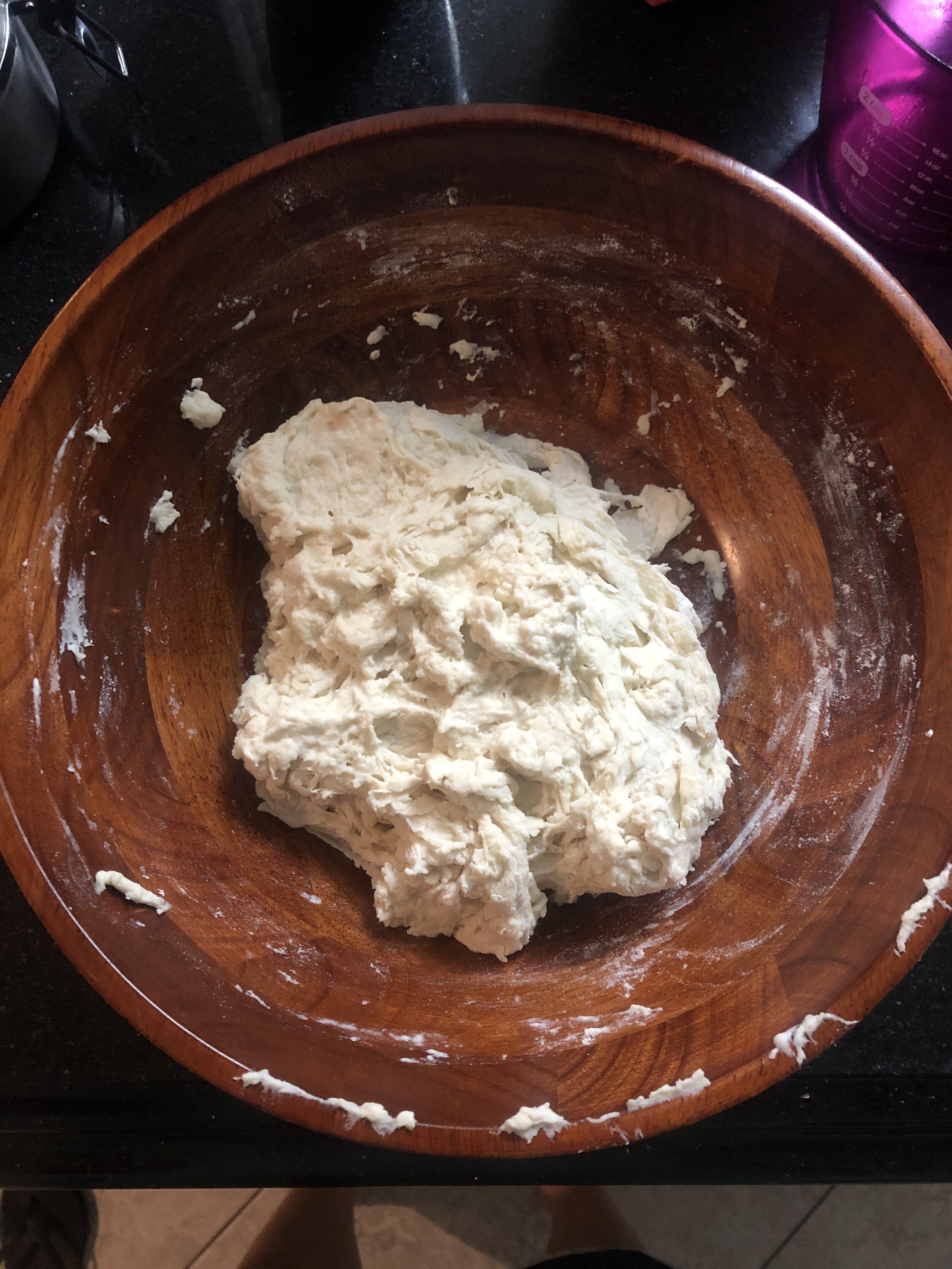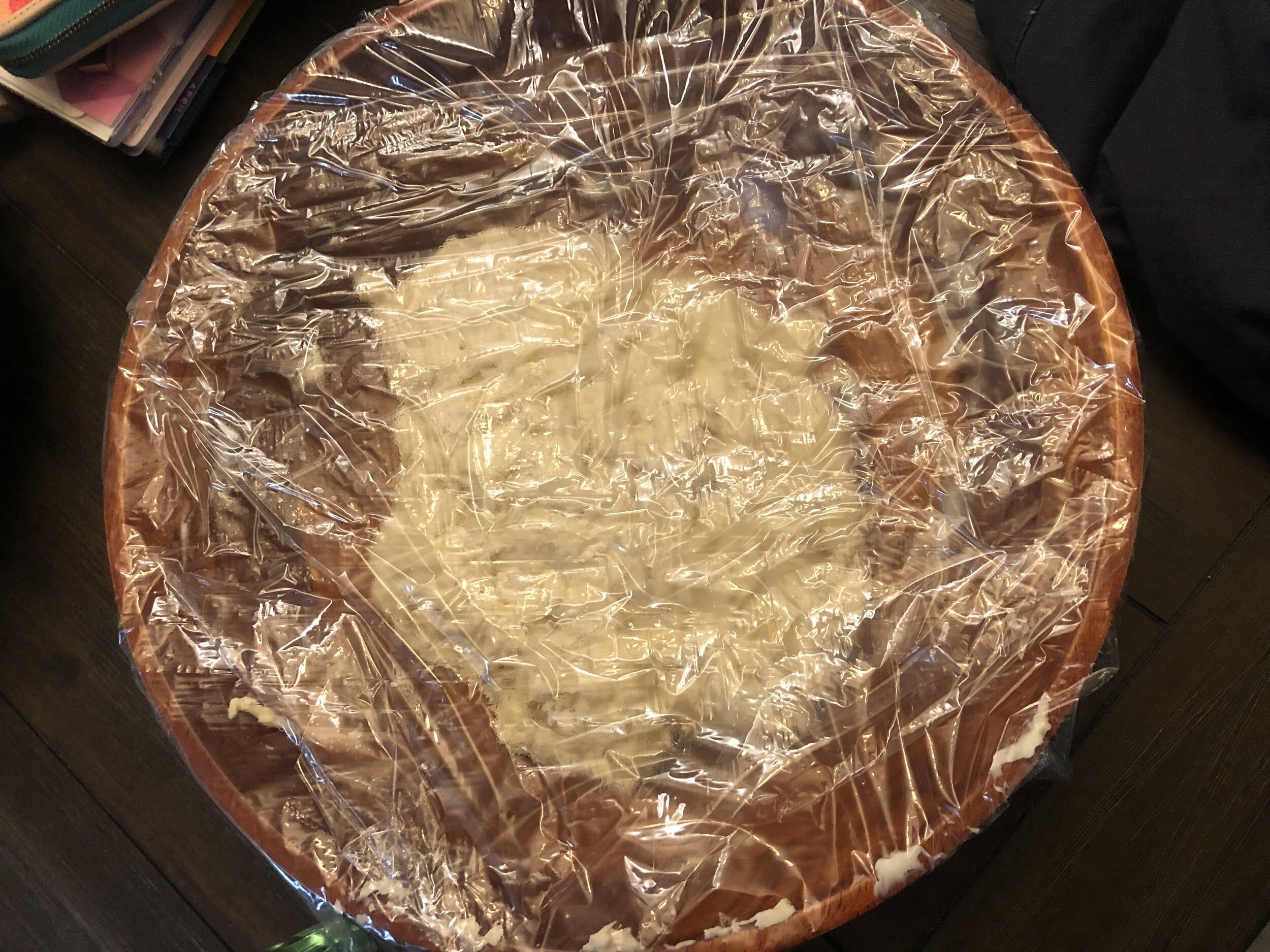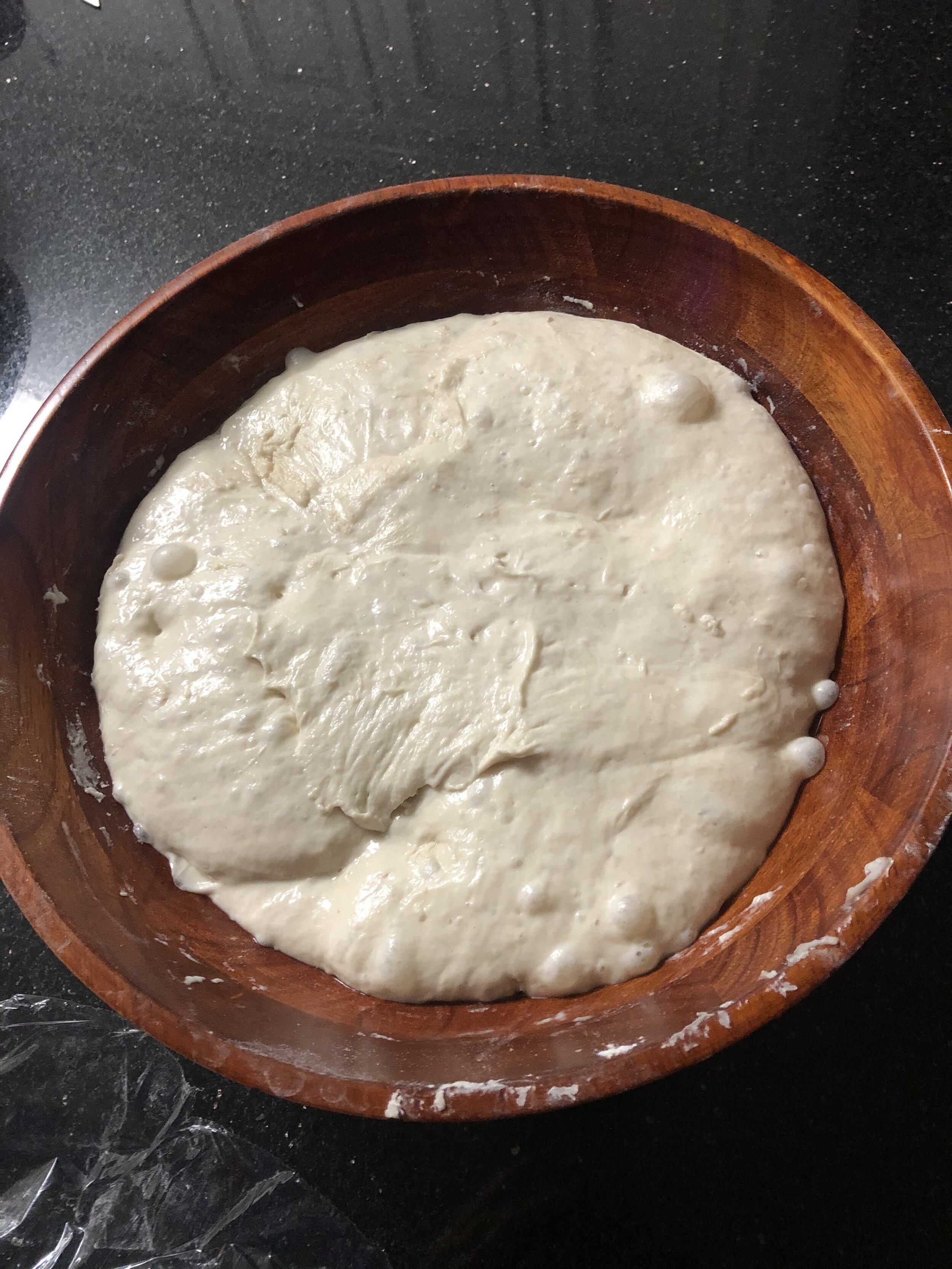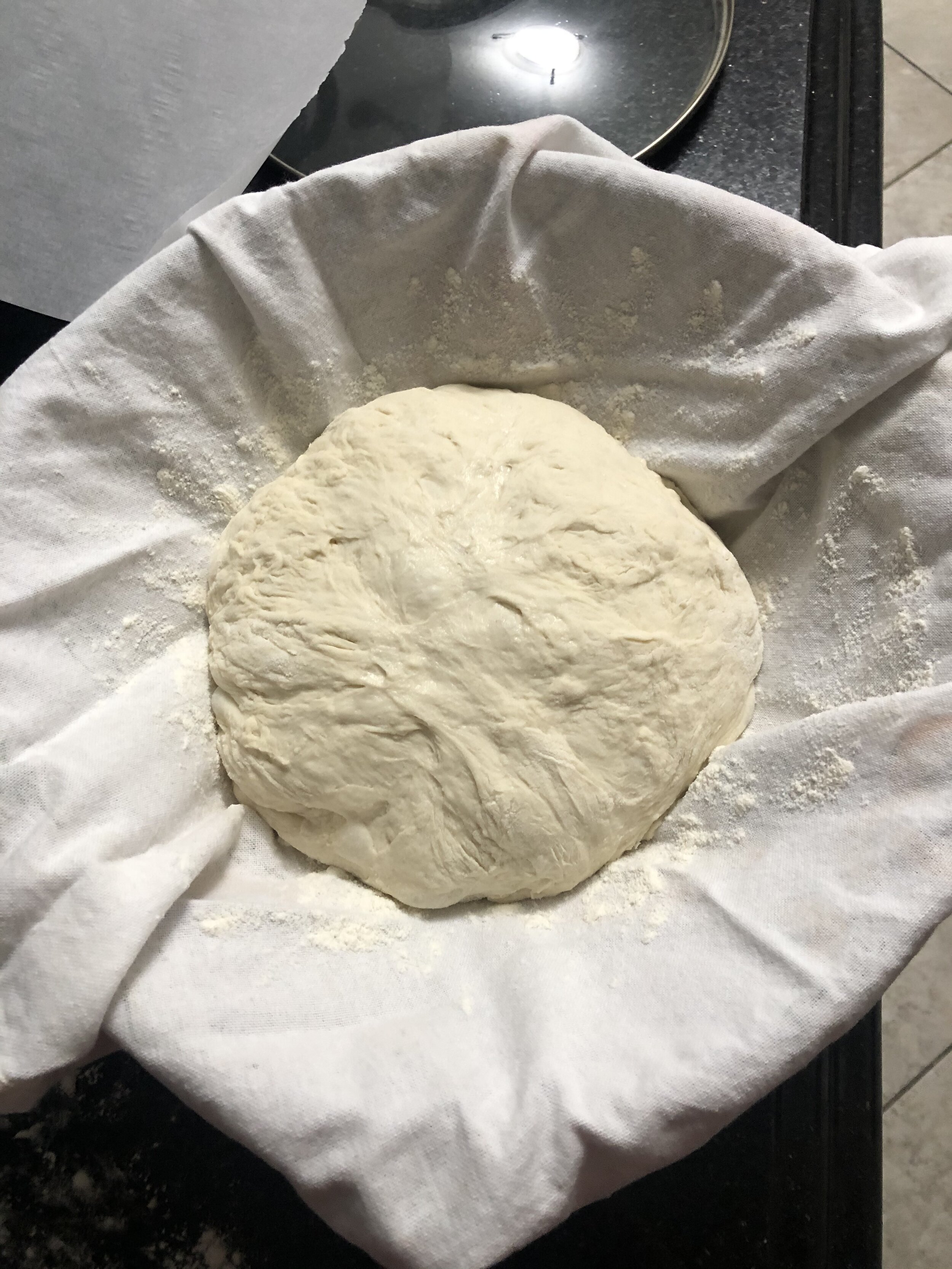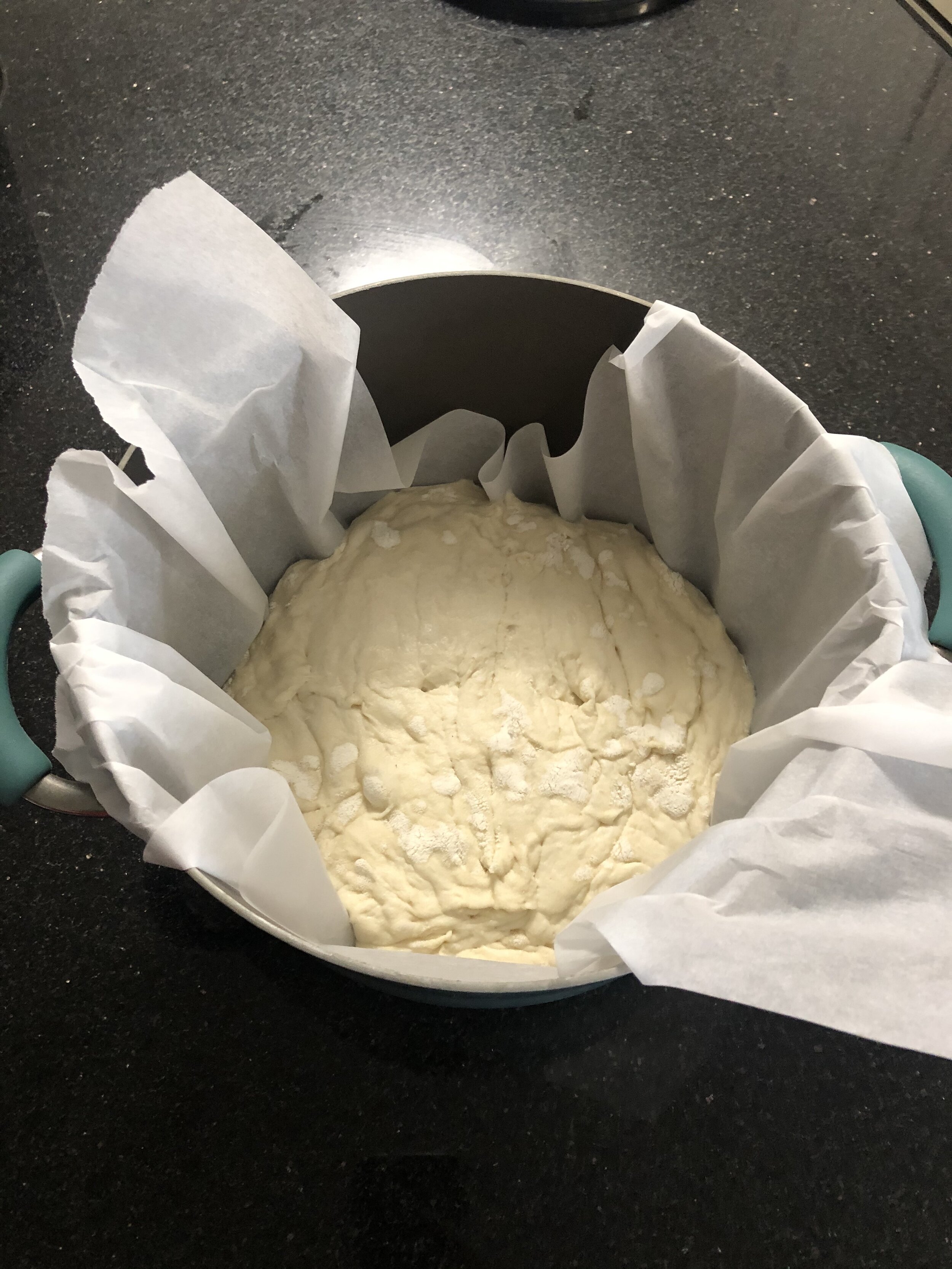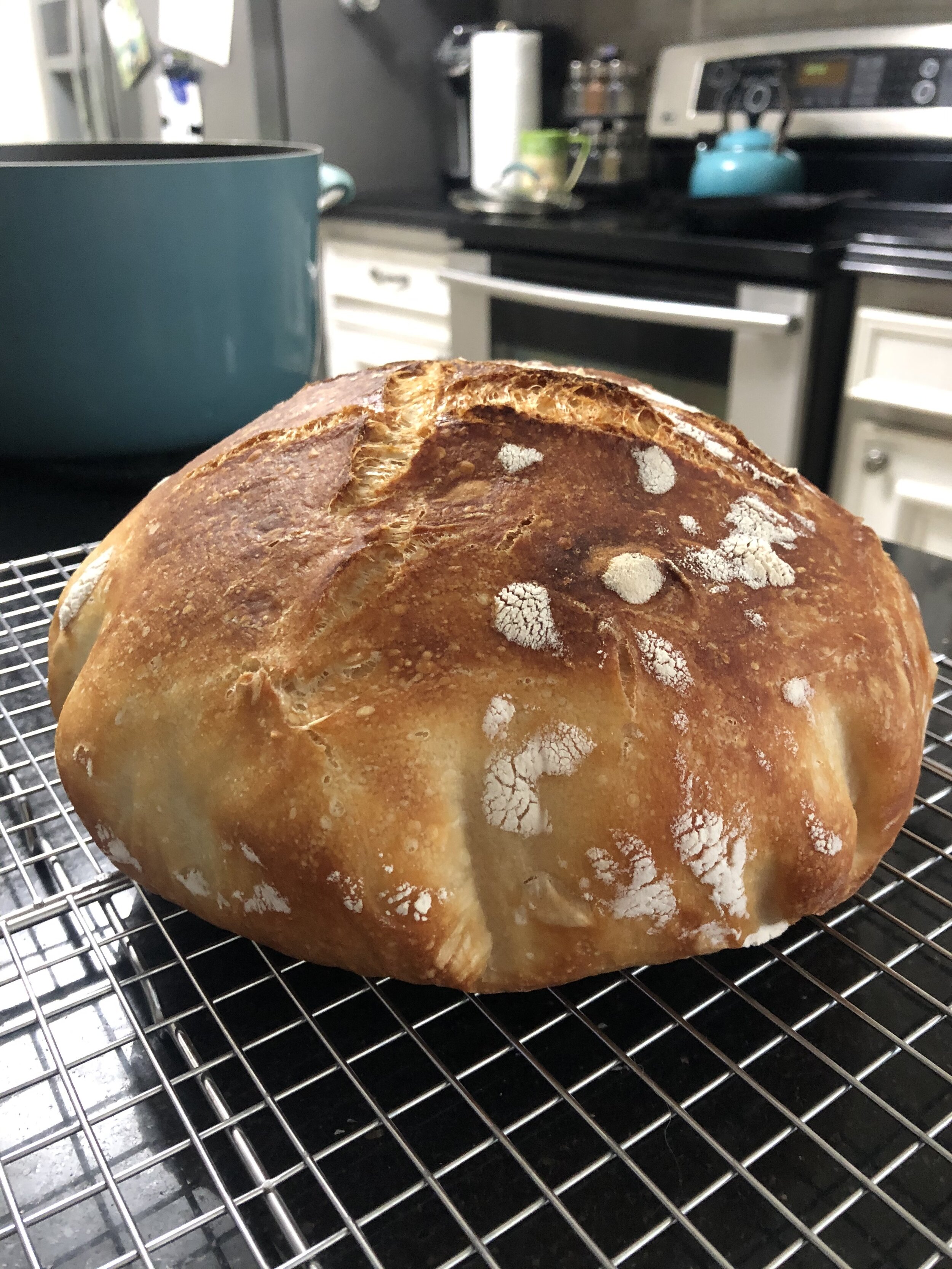The Nutrient That Boosts Immunity and Healing
During the fall & winter seasons, people become more aware of taking care of their immune system, and there is a nutrient that you should focus on, and it isn’t Vitamin C.
Ps. you should be treating your immune system right all year long, so here is a previous post on How to Boost Your Immune System All Year Round.
Zinc
Zinc is an essential trace mineral that is vital for human health. It is a component of more than 300 enzymes and hormones and plays a crucial part in the health of our skin, teeth, bones, hair, nails, muscles, nerves, and brain function. Zinc controls the enzymes that operate and renew the cells in our bodies and regulates the sensory organs for sight, smell, and taste. While this essential micronutrient is significant throughout life, it is especially important for times of rapid growth, such as childhood, adolescence, and pregnancy, due to its role in helping cells grow and multiply.
So, let’s talk in more detail about the daily requirement for zinc, how to find it in its most absorbable form, why a deficiency may occur, and different signs and symptoms you may experience if a deficiency exists.
According to the National Institute of Health, the daily requirement of zinc will vary depending on your age. On average, babies will require approximately 2 mg/day, children 3-5 mg/day, teenagers and adults 9-11 mg/day, and pregnant or breastfeeding mothers 11-13 mg/day. As always, it’s best to consult with your healthcare provider to determine your precise bio-individual need.
Where Do I Get Zinc From?
In terms of where to find it, zinc is present and readily absorbable from many types of food.
Oysters! A typical oyster weighing approximately one ounce will contain about 8-9 milligrams of zinc, which is close to the daily requirement for an adult!
Organs and meat of pasture-raised beef, chicken, and lamb, as well as wild-caught fish and crustaceans, like crab and lobster.
Nuts & seeds
Shiitake and Crimini mushrooms
Spinach
Asparagus
Quinoa and oats
Raspberries & other berries
However, some of these plant-based sources of zinc come with a caveat.
Many of these plant-based sources have a substance within them, commonly referred to as an anti-nutrient, called phytic acid. While these phytate-rich foods are typically healthy, in terms of zinc absorption, they pose a problem. The phytic acid in seeds, grains, legumes, and nuts actually binds to minerals like zinc, iron, and calcium which greatly inhibits their absorption.
One way to reduce phytic acid content is to soak and sprout your seeds, grains, legumes, and nuts before consumption. Another way to increase zinc absorption is to ensure the consumption of animal proteins with any phytate-rich food as they improve zinc absorption. So, eating your meat with your greens has more weight to it than just a balanced meal!
How Do I Know If I’m Deficient?
Unfortunately, zinc deficiencies are far too common among populations whose main food sources come from grains, cereals, and processed foods.
Due to the many roles zinc plays in the human body, there is a broad range of physiological signs of a potential deficiency.
Organ systems known to be affected by such a deficiency include the skin, gastrointestinal, central nervous, immune, skeletal, and reproductive systems.
Signs of a zinc deficiency can vary depending on the severity of the condition but may include things like
loss of hair
frequent infections
poor appetite
lack of taste or smell
skin sores
slow growth rate
trouble seeing in the dark
or wounds that take a long time to heal
There are two other important things worth noting about zinc.
For women on birth control, a side effect of the pill is inhibited zinc absorption. For this population, it’s especially important to incorporate zinc-rich foods.
On the flip side, too much zinc, whether from diet or supplementation, can impair copper status. Here, the recommendation is to focus on food sources that are rich in both zinc and copper.
Zinc is critical to every aspect of our biology and must be incorporated into our diet on a daily basis. As always, be sure to focus on high-quality, nutrient-dense whole foods that include a variety of macro and micronutrients to ensure adequate balance and absorption!
So, which juices would have good amounts of Zinc in them?
Until next time!
Keep it Fresh. Keep it Simple. Keep it Real.
Juicing Cured My Gastroparesis
Juicing Cured My Gastroparesis
A lot of people ask me the same question “Why did you start juicing?” and I never thought so many would, because I figured they would just chalk it up to me wanting to be “trendy”.
This is not the case, though, and I find it pretty cool that people are so interested in my story. So, I am going to lay it all out there. Maybe it will help you find some peace in something you’re dealing with. Maybe it will give you hope for your health. Or maybe it will just be a little extra layer of info about me. Whatever it may be, here it is.
I Wasn’t Eating
You read that correctly. Let’s take it back to 2014. As each month passed, I stopped being able to eat more and more. I would always sit down to try, and sometimes I would force myself and then end up being really sick afterwards. It was not a good direction I was heading, nor was it a good lifestyle to be living. I could literally eat a piece of apple and be full for 2 days. That is not normal and that is not healthy.
I was running out of hope and ideas on why I was feeling this way. I tried everything, cutting out lactose, cutting out gluten, cutting out even certain fruits and vegetables. Nothing was working. Every trendy diet you can think of out there, I tried, and it failed me. Finally, I decided it was time to go to the doctor.
No One Knows
From October 2014 until May of 2015 I endured test after test, pill after pill and plenty of heartache. Doctors couldn’t figure out what was wrong with me. By all standards, I was a perfectly healthy 22-23 year old with a tummy ache.
We did tests for colitis, Crohn’s, IBS, IBDS, cancer checks and many more. Finally, my mom and I sat on her bed one night scouring the internet for any possible answer, and that’s when it came to us. We clicked on the link for something called, Gastroparesis. Sounds scary, but more than that, it was confusing. The only thing we could find, at first, was that it was for diabetics. I am not diabetic.
With more digging, we found that you can get Idiopathic Gastroparesis. This simply means they don’t know why it happens or what caused it. AWESOME. Gastroparesis technically means “paralyzed stomach”, but it has everything to do with your stomach not emptying the food in an appropriate amount of time and not being able to digest and then all the repercussions that follow that. EVEN MORE AWESOME…
The next appointment I had with the doctor, I mentioned the possibility of Gastroparesis and they looked at me and said, ”It’s highly unlikely, but if you really want to do the test for it, we can order it for you”. I am glad I asked. I went in for the 4 hour test and after 2 hours, the nurse told me “Oh honey, you don’t even need to stay for the next 2 hours. It’s plain as day that you have this.”
The test is comprised of you eating a completely balanced meal. So, 1 egg white and two pieces of toast with jelly and some water. You then lay down and literally just lay there. A machine monitors the emptying of your stomach. After 2 hours, you are supposed to have emptied 50% or more of your food. After just 2 hours of me laying there, I had emptied 32%. Now, this might not seem like a big deal, but it would take a normal person 4 hours to empty their stomach and digest, it would take me anywhere from 6-9 hours, depending on the meal. That can be painful, trust me. Food sitting there for hours, stomach acid building, and so many more things happening.
The Next Steps
Ok, so we figured it out. Now what? How do you cure a disease that you don’t even know how or why it happens? You take a guess and try every pill under the sun!
My doctors gave me EVERY pill they knew of that MIGHT help. The reactions were detrimental. One gave me anxiety so bad I couldn’t handle myself. I’ve never had it, and I can tell you that I never want to again. The next cramped my body up so bad I couldn’t walk. The final pill changed my moods so drastically that I was a nightmare to be around. I didn’t even want to be around myself. I knew taking medicine my whole life was not something I was wanting to do my whole life, either.
That was it. Those were all of my options. BUT WAIT, there was one more. The doctors said I could get a pacemaker put into my stomach. 23 years old and you want to do major surgery on me that might not even work? No thank you. I don’t want to have to return every 10 or so years for major surgery.
“Where do I go from here? Am I just doomed to feel like this for the rest of my life? I can’t even hold a normal job, because I am so sick. How will I be self-sustainable?” These were the daunting thoughts that ran through my head most days. This is not a good life for someone so young and just starting out.
Family To The Rescue
After expressing all of my pain and struggle to my older brother, he mentioned I should try juicing. At the time, he lived in Austin, so I just thought he was being a “trendy, hippy Austinite”. So, I wrote it off for a while. He then sent me 2 recipes to try.
The first one I ever sold, The Beginner, was a version of the juice he told me to try. It changed my life. I was feeling so much better, because my body was getting these nutrients I needed, but not putting the stress on it to digest solid food. I was able to “eat” without eating, without feeling sick, without all of the pain. This was my first step to getting my life back.
I decided to commit to juicing every day for at least breakfast and I did it for about 6 months and then tried a 3-day cleanse. Everything in my body was changing, for the better. I was feeling healthier, stronger, happier, full but not sick. BUT, my stomach wasn’t quite there. When I wasn’t juicing, I was trying to eat normal food, but my body still wasn’t having it.
The Final Step
Juicing had helped me out tremendously, but I still had what felt like a baseball once I ate real food. My mom and I started searching again! We found acupuncture. Wow. Just wow. I drank a juice and headed off to my first appointment, nervous and very reluctant. This was my missing piece.
I went to Marr Physical Medicine in League City. Dr. Marr is a Chiropractor that studied acupuncture. He was kind, and listened to all my complaints and knew exactly where to put the needles to help me out. After that first appointment, I finally felt like my old self again. I went back for 6 more sessions and then I continue to go about every 4 months. When I explain it to people, I equate it to jumping your car’s battery.
My nerves weren’t firing to my stomach, but as soon as he put those needles in and a heat lamp over them, it was like my whole body got a fresh charge. It was the most incredible feeling. I walked out of that first appointment with a smile and then about an hour later, I felt hungry for the FIRST TIME IN A YEAR AND A HALF. I almost confused it with being sick again, because I had forgotten what that felt like.
Here Comes Real Peel
Fast forward to 2016 and, I have done it. I have “cured” myself back to about 85% and I couldn’t have done it without juice and acupuncture. Once I realized the magnitude of what I had done, I knew I HAD to use this knowledge to help others. My thought was “If juicing could almost cure my incurable condition, then what could it do for the person with indigestion? Or the person with chronic migraines? But more than that, I thought, with all of this knowledge of juicing and nutritional therapy, how can I help others with Gastroparesis?”
Enter Real Peel. I got certified as a Nutritional Therapy Practitioner and did research on what each fruits and vegetables did for your body and I created juices around those. For those with Gastroparesis & other digestive issues, I always suggest The Guardian. Even something as simple as low energy, there is The Sparkler.
The possibilities are endless with nutrition and if you ever thought that Real Peel was created just to be a part of a trend, then you are mistaken!
Then, I knew juice wasn’t the only way, so I wrote down all of the things I tried to help with my Gastroparesis and created programs to help others. Just in a faster way than I figured it out.
It is now 2023, and I have spent years feeling great! For an update, click here.
But aside from my own health, I have helped countless women and men suffering with Gastroparesis with my One-On-One services. Want to learn more about Gastroparesis and how I have helped myself and many others get their Gastroparesis under control?
Follow these few quick steps:
Have you downloaded our FREE 3-Day Gastroparesis Guide? If not, click here to download.
Then, click here to head to our Gastroparesis page. There is so much information on there to go over and learn.
If you are interested in Juicing for Gastroparesis, we have an Ebook containing recipes for Gastroparesis for all severity levels. You can find that ebook here.
I am here to help you heal, to enhance your health, and to make your quality of life so much better! I want you to THRIVE, not just barely survive.
But, that’s just me. That’s my story of how juicing (and some other protocols) healed my Gastroparesis.
That’s also my why. That’s why I get up every day and help clients, write blogs, put out as much information as I can. To continue to make juices and provide you with nutrition information.
I don’t want anyone else to feel how I felt. I want to change the way you feel.
Until next time,
Aubrey.
Keep it Fresh. Keep it Simple. Keep it Real.
Foods to Boost Your Immune System
Our previous blog post focused on How to Boost Your Immune System, but you now know that one of those tips is a nutrient-dense, healthy diet. So, you might be asking, what kind are the foods to boost your immune system?
Here are 10 foods that are great for your immune system, year-round:
Citrus: I feel like this is the most obvious, but it’s a MUCH better option than a vitamin-C supplement. Include Oranges, Lemons, Limes and Grapefruits as a regular part of your diet.
Red Bell Peppers: Most might believe that oranges have the most vitamin-C, but they would be wrong. Red bell’s have more than double the amount of vitamin-C than an orange!
Ginger: an inflammation killer. Inflammation is a major immune response, and ginger can help reduce the inflammation in the body, which helps reduce the stress on the body and the immune system.
Turmeric: very similar to ginger, turmeric is a major player in the inflammatory process.
Green Tea: green tea is packed with flavonoids, a type of antioxidant that helps enhance the immune function
Yogurt: we talked about how keeping up the microbiome is an important part of the immune system, and one way you can do that is with yogurt. You need live cultures, like in Greek yogurt in order for it to work the way it should
Spinach: yes, it’s also packed with vitamin C, but it’s also packed with lots of antioxidants with infection-fighting ability. It’s at its best when it’s not cooked. All the nutrients are in tact.
Garlic: garlic is packed with antibacterial, antiviral and anti-fungal properties. They are rich in antioxidants that help eliminate free radicals in the body.
Broccoli: 1 cup of broccoli provides the same amount of vitamin C as an orange. It also contains a few of the needed B vitamins and some other needed minerals that support the immune system functioning.
Sweet Potatoes: they contain a TON of vitamin A and about 30% of the daily recommended vitamin C needed. Plus, they have a good amount of fiber. It’s like you’re getting a 3 for 1 deal.
Bonus: Pomegranate: I just love this fruit, so it’s my bonus tip. Pomegranates have beneficial compounds that inhibit the growth of bacteria.
Hopefully, this helps give you ideas on the foods you should be regularly incorporating into your diet in whatever way you can.
Some of these can be combined within one meal, making it super easy to have a variety in your diet.
If you are needing help on what exactly you should be eating for your Gastroparesis, make sure you download the Free 3-day Gastroparesis Healing Guide.
Until next time,
Keep it Fresh. Keep it Simple. Keep it Real.
Love, Aubrey
How to Boost Your Immune System
If you are looking for ways on how to boost your immune system, you are on the right path. However, you are probably looking during this crazy virus, and while that is a wonderful thing to do, you should continue to do these things all throughout the year, so that when the next flu season hits, you will feel a bit more confident in your body’s ability to handle anything.
So, here are 10 things to do year-round to promote a healthy immune system, in no particular order:
Get Outside: Many people do the same thing everyday. Go to work, come home and hang out inside cooking dinner, tending to children, etc. Getting outdoors, especially during the daytime, provides the body with needed Vitamin D, but also breathing in the chemicals produced by the plants, can help increase our white blood cell levels. (I don’t mean the manmade chemical plants like in Houston lol)
Keep Up Your Microbiome: basically, make sure you are feeding the good bacteria in your body, and replenishing the good bacteria. This can be done by a plethora of fruits & vegetables, yogurts, kombucha, kimchi, etc. Gut health greatly affects immune health.
Nutrient-Dense Diet: Speaking of fruits & vegetables, you need to make sure your diet contains plenty of nutrient-dense foods and minimal to no processed foods. Fruits & vegetables have so many needed vitamins and minerals that help your body function properly.
Exercise Regularly: Working off the previous tip of eating healthy, you need to make sure you are moving your body DAILY. This doesn’t mean high-intensity exercising or lifting a bunch of weights. This could be as simple as a 20 minute walk. Keeping your body moving will allow your body to produce more of the cells that attack bacteria that are looking to cause infection. MOVE. YOUR. BODY. EVERY. DAY.
A Good Sleep Schedule: Why do you think when you are sick that all it is you want to do is sleep? This is the time when your body can restore itself and for the immune system to recharge. Getting 2-3 hours of sleep per night can be detrimental to your body.
De-Stress: Americans, especially, are always stressed out. Somehow we think constantly being busy is something good. NEWSFLASH: chronic stress is one of the most dangerous things to your body. It can create inflammation, attack the body and boom, you’re sick. Do something that relaxes you and do it more often than not.
Stay Hydrated: Humans are basically water and then a little bit of other things, so why do we deny drinking water? There are too many functions where water is necessary, but think about those needed vitamins that are water-soluble, they NEED water. So, make sure you are drinking no less than half your body weight in ounces. (120 pounds = 60 ounces of water)
Cut Down On Sugar: no, this does not mean go Keto, or cut out fruit. This means relax on the amount of sugar you intake. Sugar can weaken your white blood cells, and you need those, because they are the ones that fight off bacteria and viruses.
Herbs & Spices: kick up your cooking by adding lots of herbs & spices to your food. Things like turmeric, ginger. garlic, etc. provide anti-inflammatory properties to help your immune system out.
WASH YOUR DANG HANDS: this should be self-explanatory, but here we are. Wash them and do it often enough to protect yourself.
Do all or majority of these things year-round and you will find yourself in a good position when the next cold or flu comes around. Do these things now and you are only helping your body get ready to fight anything it comes in contact with!
Part 2 of this blog includes the foods you should be incorporating year-round. Read Foods to Boost Your Immune System here.
Until next time,
Keep it Fresh. Keep it Simple. Keep it Real.
Love, Aubrey
Sourdough Starter & Bread Recipe
You know what I hate? When a blogger writes a recipe and they tell you their life story and you are just like GIVE ME THE DANG RECIPE!!! So, I will refrain from doing that and get to it!
Recently, on the Real Peel Instagram, I showed myself making a sourdough starter and then the sourdough bread and I had a major influx of requests for the recipe. So, without further ado…
disclaimer: I am not a pro photographer or care to be, but I took the pics so you guys can see if you are on the right track while baking.
Making Your Starter
note the bubbles
2 cups warm water (not hot or boiling)
1 teaspoon active dry yeast
2 cups all-purpose flour (I don’t know how it would work with gluten-free, but if you try it, let me know)
In a bowl, add the warm water and yeast. Mix until the yeast is dissolved. Once dissolved, mix in the flour and stir until smooth.
Pour the starter into a plastic container that is big enough to allow for expansion. I, personally, used a plastic pitcher. Place a cloth napkin over the container and hold it in place with a rubber band.
Set the starter in a spot that doesn’t get too cold or too warm, doesn’t have a lot of draft and not a ton of sunlight for 5 days. Stir the starter once a day.
After the 5 days, it is ready to be used or put into the fridge for storing. If you keep it in the fridge, you only have to feed it 1 time per week with equal amounts of flour and water.
Making the Sourdough Bread
this recipe is adapted from Cultured Food Life
You will need:
1/4 cup of your starter
1 1/3 cups plus 2 tbsp of warm water (again not boiling, just warm)
4 cups plus 2 tablespoons of all-purpose flour (I personally haven’t tried other flours)
1 1/2 teaspoons of sea salt
a Dutch Oven
Parchment paper
Whisk
Spatula
Tip: it’s so much easier to gather all ingredients before you start mixing.
Add the starter and warm water to a ceramic bowl. Whisk until well combined
Add the flour and salt and combine together with a stiff spatula until fully incorporated. If you want to use your hands, go for it, but it’s not required. The dough will look scrappy, dense and sticky.
Cover the bowl with plastic wrap and let sit for 30 minutes.
After the 30 minutes, flour your hands and work the dough into a smoother ball. You can achieve this by folding the dough towards the center until it smooths out.
Place the dough back in the bowl and let rise 10 hours. You can also do this overnight. It should rise and look a lot puffier.
Use the spatula to gently pull the dough off the sides of the bowl and turn out onto a floured surface. Flour your hands and begin folding the dough over again on each side.
Let rest for 10 minutes
Line a large bowl with a linen towel. (don’t use a towel that produces lint lol)
Dust the bowl & towel with flour. Place the dough with the seam side up.
Cover it and let it rest for 1 hour.
Preheat oven to 450 degrees. Cut a piece of parchment paper to fit your Dutch Oven. Make sure there’s excess so that you can use it like “handles” to take the bread out of the pot.
Place the parchment paper over the bowl and turn the bowl over to allow the dough to fall right onto the paper.
Use a knife and make 4 little cuts. Or if you want to do a fun design, go for it.
Pick up the dough and parchment and place in the pot, carefully.
Place the lid on the pot and put in the oven for 20 minutes.
Remove the lid and bake for another 20-30 minutes. My oven temp is slightly off so I cook for a shorter time. The longer you go, the darker the crust.
When done, remove the bread from the pot and cool on a cooling rack for a minimum of 20 minutes, which is so hard to do! The loaf will feel very hard and if you thump it, it will sound hollow. Don’t worry, after cooling down, it will soften right up.
Slice and enjoy with a little butter!
click on the right side of the images to scroll through the steps to see if you are on track!
I hope you guys enjoy the bread when you make it! If you try other versions, let me know! I also made a Rosemary Olive Oil loaf and will post updates for that recipe soon!
Love,
Aubrey
Juicing, Sugar & Fiber
Juice is just Sugar & No Fiber
That’s what we hear a lot, and honestly, what has been perpetuated throughout the health and fitness world. So, I wanted to address what about that is true and not true, and how to navigate introducing juicing into your daily life.
Truths:
Yes, juice can have a lot of sugar in it
Fruit is the main culprit of it
Grocery store juices are not the same as raw juice. You can see more info on that here.
Juice doesn’t have AS MUCH fiber as eating the actual fruit or vegetable
Juice allows your body to easily absorb the vitamins and minerals that you might not be able to from eating the produce whole.
Myths:
Juicing is the same as drinking a soda. (This is so ridiculous it hurts my brain)
You will get sugar highs and crashes.
You should cut out fruit to avoid weight gain
Juice has ZERO fiber
Let’s Talk For Real
We are first going to address the sugar in juice topic. Obviously, if you drink an all fruit juice, it will be loaded with sugar. While we offer 2 juices with only fruit, this is more for those who are interested in juicing but are scared of the vegetable ones, or it’s for when parents are trying to switch their kids from those terrible grocery store juices, to real juice.
There is a major difference in adding processed sugar to fruit juice that already has natural sugar, than a raw juice that is made up of fruits. Plus, they have been pasteurized, removing pretty much all nutrients, or is made up of maybe 10% actual juice. Raw juice, is just that.
What we always suggest is more vegetables in your juice. This will cut the sugar way down. All of our vegetable juices have a small amount of fruit, like apple or pineapple, just for flavoring but we can do only greens. It’s just making sure it actually tastes good.
Now, let’s talk about fiber. There are 2 types of fiber, soluble and insoluble. Insoluble fiber is what most people think of when they hear fiber; roughage. It is incredibly good for you, makes sure you have regular bowel movements, adds bulk during digestion and speeds up the passage of food through the digestive tract. In regards to juice, the insoluble fiber is in the pulp that comes out of the juice. So, it’s not there.
Soluble fiber absorbs water and provides matter that acts as a prebiotic, which is like food for the good bacteria in your body. Soluble fiber also helps regulate blood sugar (important) and helps fill you up by slowing down the transport of food in the digestive tract. THIS IS WHAT IS IN JUICE!
We often talk about juice as a healing method, and so you want the easiest to digest and absorb methods as possible, at first. Juice is your go-to. Allowing the body to still have fiber but be able to actually absorb and use those nutrients, is crucial.
Just to touch on the “cut out fruit” issue really quickly. That is ridiculous. Fruit has so many incredible benefits, and to say you should cut it out to avoid the carbs is the wrong thinking. If you are trying to minimize sugar intake, cut out all of the breads, grains, pastas, and added sugars before you start looking at fruit as the culprit. However, I do want to mention that obviously, eating fruit all day everyday can cause problems because of the sugars, but 99.9% of people aren’t doing that.
Wrap It Up
Okay, so to wrap it up:
Juice doesn’t have to be sugar-filled. Juicing more vegetables than fruits will aid in that.
Juice contains soluble fiber, which is just as important as insoluble.
Cutting out fruit should be the last thing you do.
Juice provides so many easily digestible and readily available vitamins and minerals, it’s foolish not to drink it.
I hope that helps some of you who might have heard some of these rumors or myths about juicing and it has put you off. Juicing is a wonderful method for your body and personally, I can attest to all of the benefits of it.
Until next time,
Keep it Fresh. Keep it Simple. Keep it Real.
Aubrey
Raw Juice - What's the Big Deal?
Can’t I just buy it at the grocery store?
Oh man, do I hear this often. I also get “the one at Starbucks is cheaper”, that one really makes me giggle. Let’s go ahead and lay out some really basic facts before I get into why you should be drinking Raw Juice.
Facts:
Yes, raw juice costs more
Yes, grocery store “healthy juice” costs less. (this also applies to Starbucks juice)
Yes, raw juice has a very short “shelf-life”
Yes, it’s still looks like the same green juice
Yes, the juice at the store is different
Okay, now that we have those out of the way, we can get to breaking it down.
There is Raw juice and so, what else is there? In the industry, it’s called HPP juice, but to all of you, you don’t see the difference or even know it out-right. These are the juices that you see in the stores and juices from, typically, larger businesses.
Local juice bars, where the juice is made in store, do not HPP, so you are usually safe there. However, you can always ask if they HPP just to be safe.
Raw Vs. HPP Juice - What’s the Difference?
Raw juice is exactly how it sounds. It is where you take the produce, juice it, bottle it and then it has a shelf life of 3-6 days. It’s also the type of juice that Real Peel is and ALWAYS will be.
These juices are not made in a big warehouse, sold at the big stores or ones that are mass produced. They are usually made at your local juice bar. It is the type of juice you make at home when you buy produce and juice it. Or by your local juice girl (hi, that’s me)
HPP - High Pressure Processing
When we say “processed” here, it is not as bad as the typical processed foods you think of. When you HPP a juice, a machine is applying a certain amount of pressure, at a certain time length and more science-y stuff, but that’s the gist. It can be pressurized to make the juice last anywhere from 21 days to 90 days on the shelf.
HPP is not making juice, as it all starts out as raw juice. This is taking it one step further and processing it. What does this do? Kills quite a bit of the enzymes, bacteria and nutrients in the juice.
Well, bacteria and enzymes sound scary, so it’s okay those are killed off, right? Not totally. Those organisms and enzymes in the raw juice will be used by your body to aid in digestive processes, treated like a pre- or probiotic and boosts your immune system.
The nutrient profile also diminishes. So, again, using juicing as a healing method, you would want the most nutrient dense juice out there.
So, Raw or Grocery Store Juice?
The way I, and Real Peel, approach this topic is like this:
Always choose raw juice first
Raw juice heals the body and provides it all of the wonderful nutrients, enzymes and bacteria!
The idea of juicing kale and then letting it sit on a shelf for 90 days makes me shudder, even though I know the bacteria have been killed off.
If you do not have a local juice bar, or your local juice girl to make you juice, then yes, a green juice from the grocery store will suffice.
No matter which way you turn it, raw juice will always be the more nutrient dense and health beneficial juice out there.
If you are having to choose between a Gatorade, soda, juice on the shelf or picking one of those grocery store green juices, then always choose the grocery store green juice. (or that Starbucks juice)
However, if you have the option between freshly made, raw juice or saving a buck or two on a grocery store juice, then ALWAYS, ALWAYS choose the raw juice. Your body will thank you for it later.
I know that was a little technical, but I get these questions all of the time about the difference between the juices that we make at Real Peel or the juice they can go to the store and buy.
Plus, know that when you go to your local juice bar or company, buying a raw juice makes a person do a happy dance, and you can’t beat supporting local!
Until next time,
Keep it Fresh. Keep it Simple. Keep it Real.
Love, Aubrey













